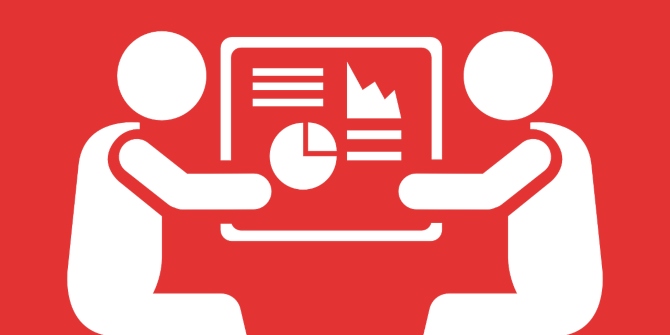Researchers have studied France’s breast screening programmes, which in 2022 attracted less than one in two women old enough to be screened. Participation in organised screening has been stagnant for more than ten years, leaving almost half of French women off the medical radar. Aurélie Jean, Grégory Ramniceanu, Philippe Benillouche and Mark Esposito suggest three strategies, which can be combined to encourage increased participation.
In France, breast cancer is the first cancer in women and the leading cause of death from cancer, with more than 61,000 new cases each year. During their lifetimes, nearly one in eight women will be affected. When detected early, breast cancer has a good prognosis, with a survival rate of 87 per cent.
Screening mammograms haven’t taken off
In 2022, according to the national administration Santé Publique, less than one in two French women old enough to be screened had a mammogram as part of the national screening campaign. This number had already decreased in 2020, when the COVID crisis limited access to screening centres for weeks. It has increased slightly since then, without however returning to its pre-pandemic level.
The annual Pink October awareness campaign, which supports the breast cancer screening program that France has been organising since 2004, aims to encourage women to go to an approved radiology centre for a mammogram. Fundamentally necessary, these campaigns today have little effect on the participation rate, which has been stagnant for more than ten years, leaving almost half of the women off the medical radar. Many factors contribute to this situation, including anxiety about the diagnosis and fear of the consequences of radiation and of pain during examination. Two other factors are still underestimated: the delays in obtaining a mammogram appointment in certain regions and the distance a woman needs to travel to arrive at a screening centre.
Solutions should be investigated to encourage women to participate in the national breast cancer screening campaign and make early detection possible. Early detection could significantly improve the effectiveness of therapies and the chances of survival. Here we suggest three strategies, both logistical and medical, which can be combined to encourage increased participation.
Strategy 1. Mobile screening to address medical deserts
In a French urban area, a woman travels less than one kilometre on average, to have a mammogram, whereas this distance increases threefold in rural areas. The country has 2.4 screening centres per 100,000 people. Disparities between regions are remarkable, which can lead to significant distances between the woman and a screening centre in some places.
The use of mobile screening trucks in areas lacking imaging centres can reduce appointment waiting times and increase the uptake in screening programmes, promoting access to early diagnosis. The “Mammo Solidaire” programme, supported among others by GE Healthcare, has a screening truck travelling to around twenty towns in the Paris region during the Pink October campaign.
The Mammo Solidaire project demonstrates the usefulness and effectiveness of such an approach and allows us to better understand the problem of women failing to do breast cancer screening. In 2022, it provided mammograms to 265 women who might not have walked through the door of an imaging centre otherwise. Of these 265 women, 28 were diagnosed with an anomaly requiring further exams and the majority of them were being screened for the first time.1
A similar Mammobile operation is deployed all year long in certain departments of France such as the ones in Normandy or in L’Hérault, and could be extended to the entire country.
The use of mobile trucks reverses the pattern of patients having to travel to breast cancer screening. The idea is for screening facilities to go close to where the patient lives, instead of having her travel to a sometimes-distant radiology centre. This solution is likely to increase the uptake in breast cancer screening campaigns, especially when it reassures them through an informative session prior to the mammogram.
Strategy 2. Earlier diagnoses to beat the disease
Research and development is advancing in the early detection of cancer in general, and breast cancer in particular. Today, radiologists can access artificial intelligence-based solutions, more precisely, machine learning, to detect and localise tumours of reduced size on mammograms; identify normal cases in order to improve screening flows; assess a woman’s risk of developing breast cancer in subsequent years [6]; or simplify or avoid the second reading.
Early detection improves the prognosis, improves the effectiveness of treatments and increases the patient’s chances of survival. Promoting work on early detection will encourage women to be screened by reducing their fear that an advanced lesion will be diagnosed and that she may need heavy treatment.
Strategy 3. Targeted and personalised treatments
In light of remarkable developments in the field of artificial intelligence, personalised and precision medicine are among the areas being developed at an accelerated pace. Precision medicine can enable significant progress in patient care and in the relevance and effectiveness of treatments.
Applied to breast cancer, this approach could avoid aggressive treatments in some cases by reducing the effects of certain therapies or by developing and using new methods such as immunotherapy. Such advances, associated with better communication, could further encourage women to be screened regularly by reducing their fears of heavy and aggressive treatment that often have difficult social and economic consequences.
Towards a new standard
Current research and development is gradually moving the management of breast cancer towards a new standard in which the diagnosis, treatment and monitoring of the patient evolve and allow doctors to treat the disease earlier and more effectively. In response to future advances in screening campaigns, women will then behave differently, thus favouring personalised, regular, and local monitoring, which will be beneficial to them.
- This blog post represents the views of the author(s), not the position of LSE Business Review or the London School of Economics and Political Science.
- Featured image provided by Shutterstock
- When you leave a comment, you’re agreeing to our Comment Policy.





